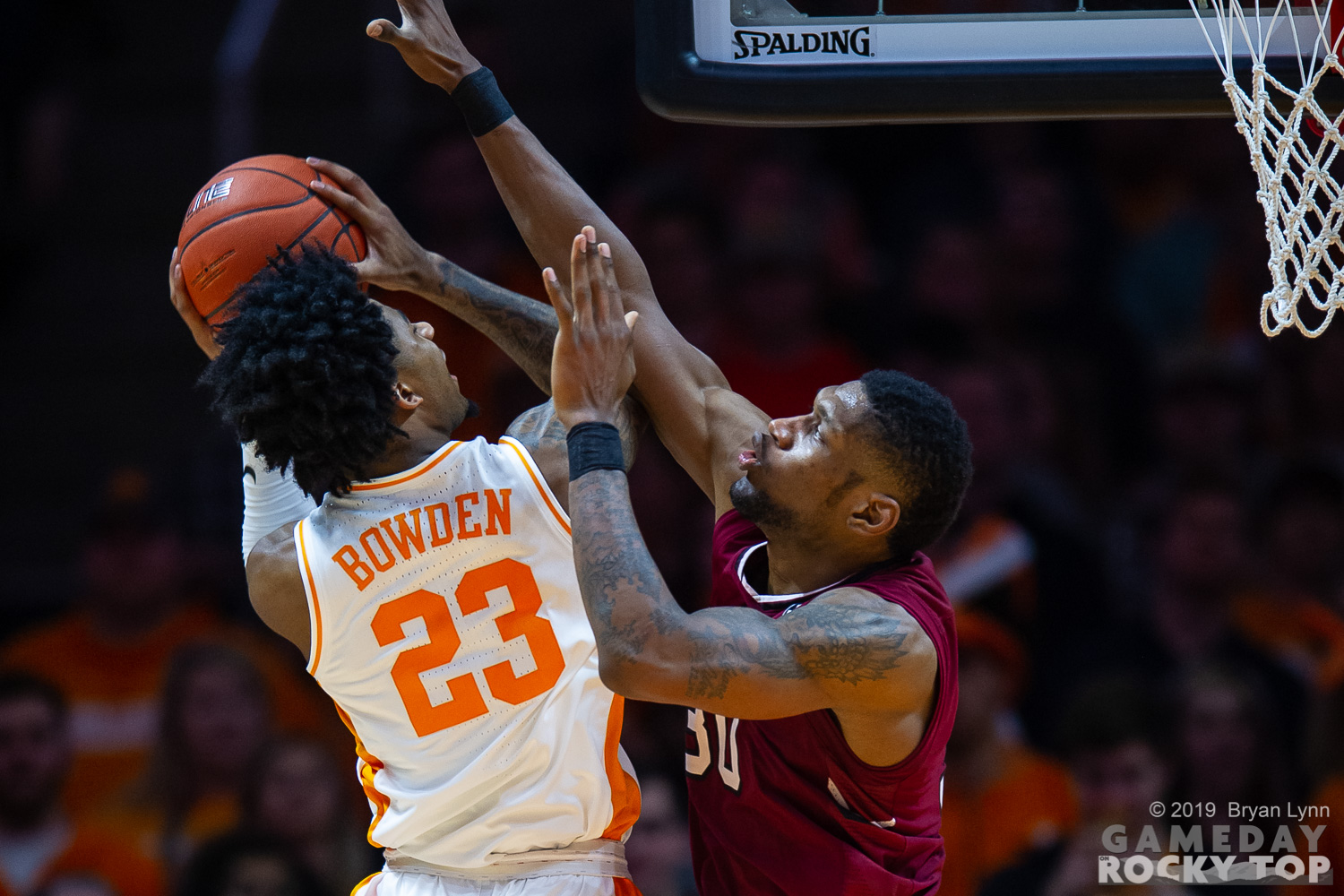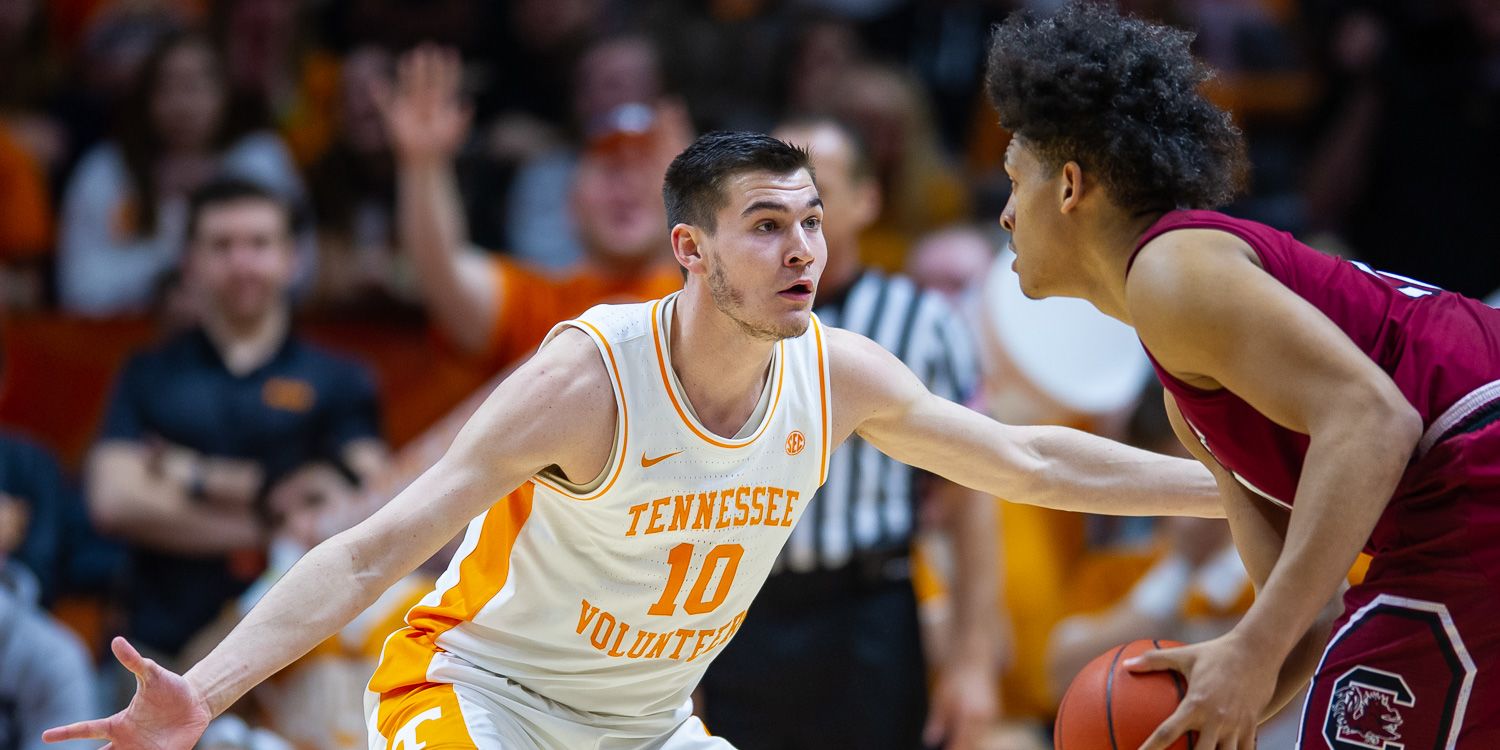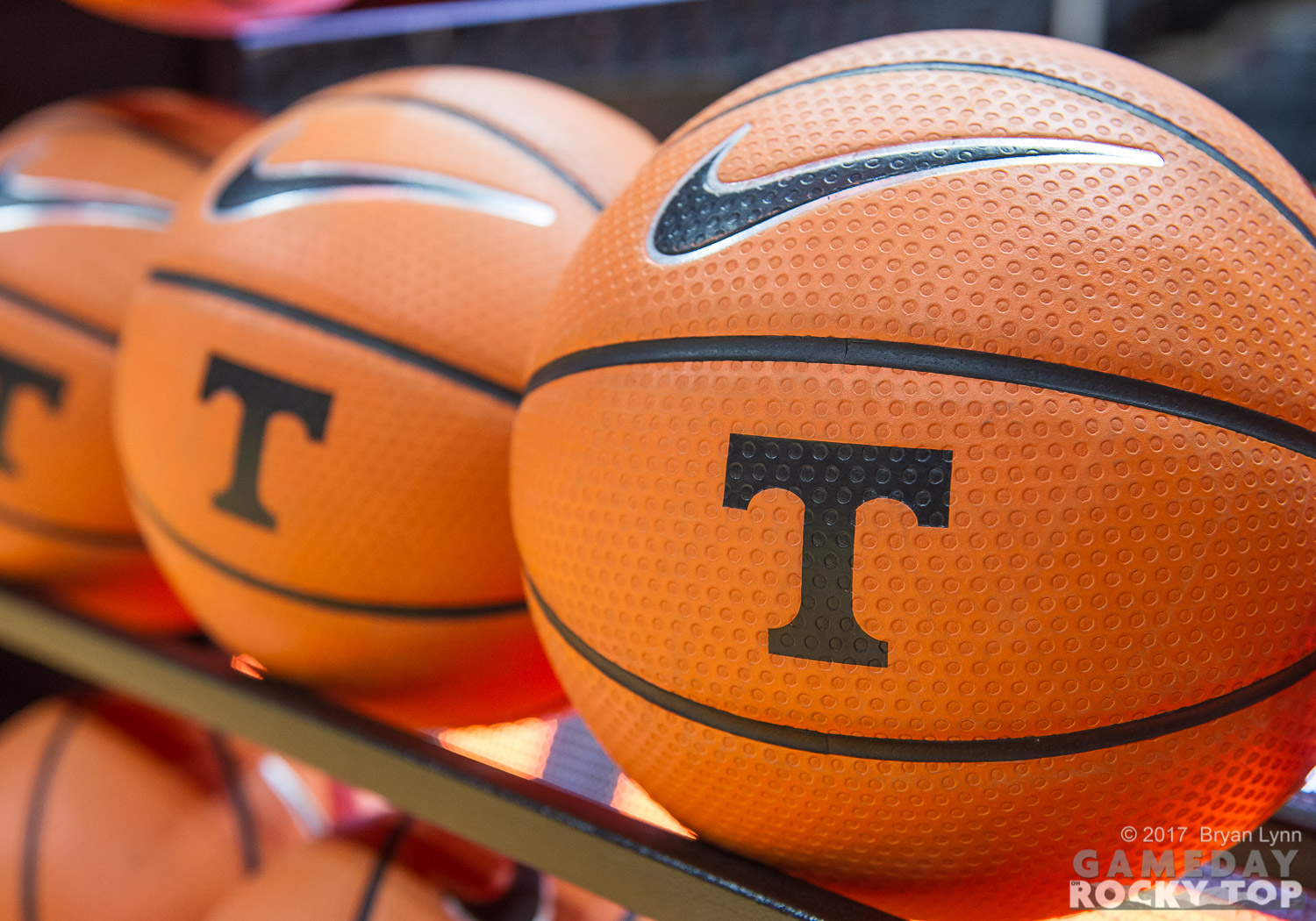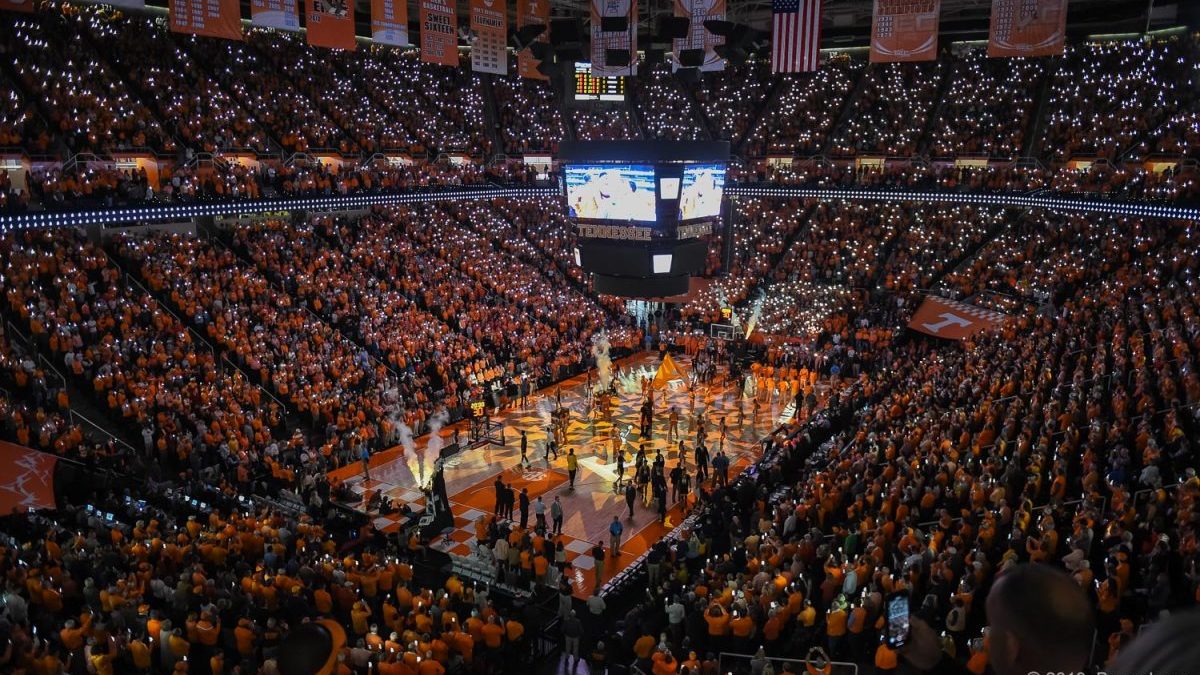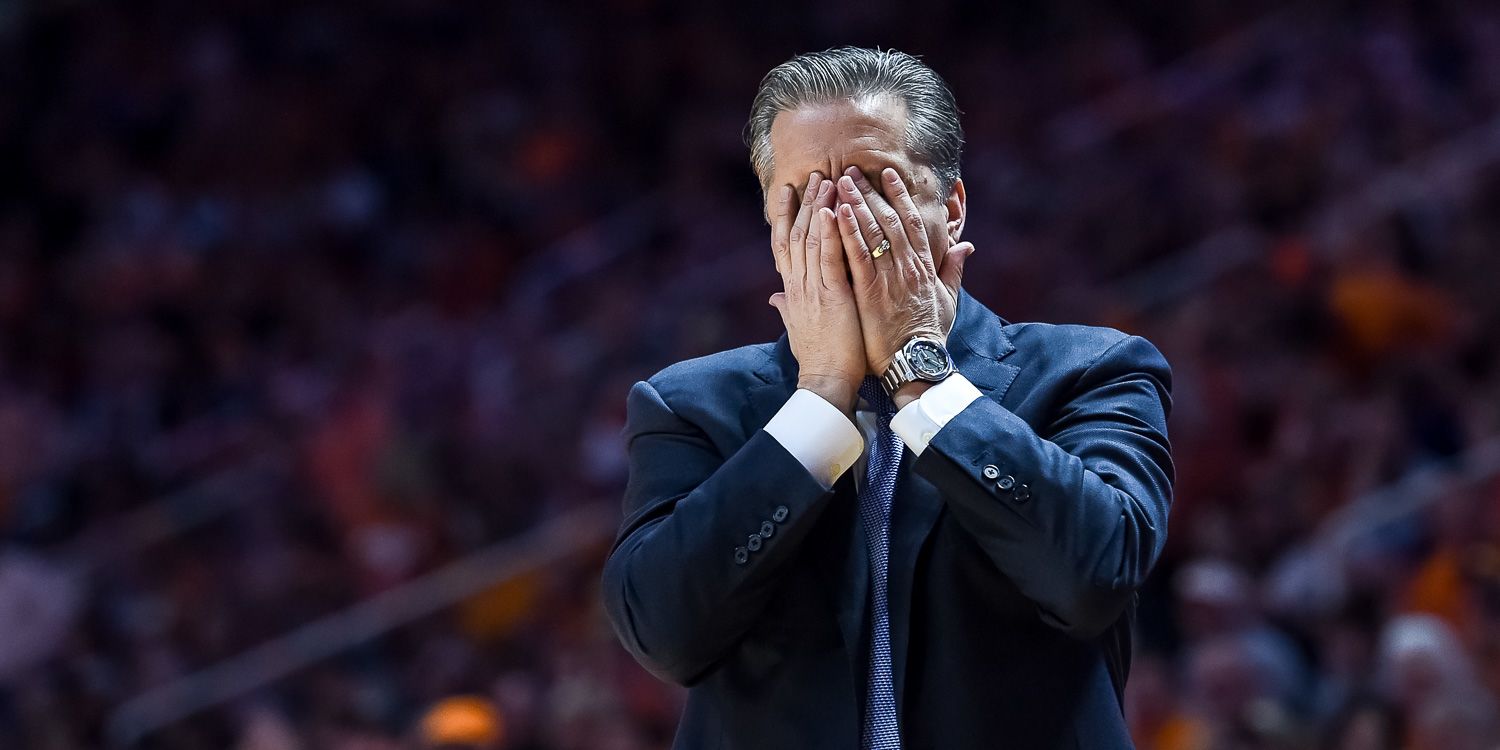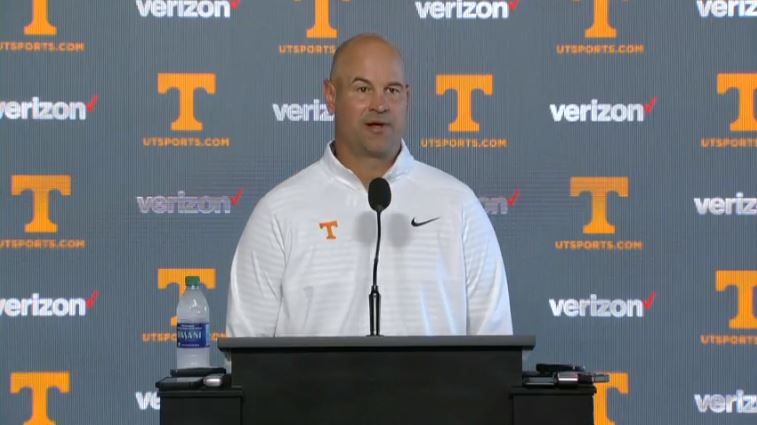For NCAA Tournament purposes, Tennessee’s formula remains much the same as it was two weeks ago: the Vols need wins, and their closing schedule should be strong enough that it doesn’t matter much how they get to 18-13 or 19-12 as long as they get there. Coming into the month, we looked at historical data on teams earning the final at-large bids: since tournament expansion to 68 in 2011, no team has earned an at-large bid with less than 19 wins or more than 15 losses. Three different SEC teams got in at 19-15 in the last three years.
A 17-14 (9-9) finish could send the Vols to Nashville with a chance to get to 19-15 by way of two SEC Tournament wins. But the uniqueness of Tennessee’s case – games with and without Lamonte Turner – makes me think you really need to get to at least 18 regular season wins to give yourself a more realistic chance.
The NCAA’s NET ratings are too new for reliable historical data, but last year the four teams who went to Dayton – Arizona State, Belmont, St. John’s, and Temple – finished 63rd, 47th, 73rd, and 56th. Ohio State earned the final non-Dayton at-large bid at 55th. Last year’s 10 seeds – Florida, Iowa, Minnesota, and Seton Hall – finished 31st, 43rd, 61st, and 57th. The Vols are currently 63rd in NET, so they’re within the margin on a one-year sample size. The Gators were 19-15 last season but finished 14th nationally in strength of schedule.
Tennessee is tough to predict on that front – the Vols are 53rd currently in KenPom’s SOS rating – and that number may go down a bit after the Vols host Vanderbilt on Tuesday. But it will only go up after that – at Auburn, at Arkansas, vs Florida, at Kentucky, vs Auburn – I’m just not sure exactly how high. Bart Torvik’s predictive data projects it to finish 39th. Warren Nolan’s projects it to finish fifth. The truth is usually somewhere in the middle.
One of the biggest problems Tennessee has right now is Washington, who’s been in absolute free fall: the Huskies have lost seven in a row, five of them by six points or less, and are 2-11 after a 10-2 start. They’ve fallen out of Quadrant 1, leaving the Vols with just two such victories (VCU, at Alabama). The good news on that: it removes some of the Lamonte Turner bias from the equation.
The Vols, of course, will get at least five Quad 1 opportunities in their final seven games (home vs NET 1-30, neutral vs NET 1-50, away vs NET 1-75). That starts with an on-fire South Carolina team in Columbia tomorrow.
If you’re looking for the most straightforward path to 18-13 (10-8), it’s winning out at home (Vandy, Florida, Auburn) and beating South Carolina on the road. That scenario also gives the Vols an elite win over Auburn (in the season finale), a happier scenario than getting to 18 wins but losing to Auburn and Kentucky twice. After watching the Vols dismantle Arkansas on Tuesday, if you want to replace tomorrow with the February 26th trip to Fayetteville as the most winnable road game, fine by me. KenPom’s math still gives the Vols slightly better odds in Columbia at 41% vs 32% at Arkansas.
So nothing about Tennessee’s NCAA fate will be decided at South Carolina. The Vols need 18 or 19 wins to go to the SEC Tournament feeling like they’ve got a real chance. Lose tomorrow and you need to go 4-2 down the stretch. Win tomorrow and you’re already at 15; follow it up with a home win over Vanderbilt (more can’t-lose than must-win), and you go to a CBS game at Auburn at 16-10 (8-5), and you’re back in the conversation much faster.
Either way, the Vols just need wins. And this one will be harder to come by than we bargained for.
This chicken is spicy and last time it gave me heartburn.
Tennessee beat South Carolina 56-55 on January 11 with heavy usage from the word “despite”: the Vols made just 14 shots and went 25.9% from the floor. The latter would’ve been a decade-low if not for the 25% performance against Memphis. But the Vols held South Carolina to 32.8% from the floor, the Gamecocks hit just two threes on thirteen attempts, and most importantly, the Vols went 22-of-28 at the free throw line.
That loss dropped South Carolina to 8-7 (0-2), their third straight defeat including one at home to the Hatters of Stetson. And so right on cue, they beat Kentucky the next game out. And now they’ve won seven of nine.
The schedule hasn’t been overly challenging after Kentucky – they lost at Auburn by 13 and won at Arkansas by two – but they’re getting better along the way. They just beat Texas A&M by 20 and won at Georgia by 16 in a game they led by 24 with four minutes to play. Confidence is high.
As you’d expect, it’s defense: at Georgia they went just 11-of-19 from the line and 6-of-17 from the arc and still flat out dominated. They held the Dawgs to 3-of-24 from the arc and Anthony Edwards to 0-of-7, and turned Georgia over 19 times. Texas A&M started the game on a 9-0 spurt, then South Carolina went on a 61-21 (!!!) run. The Aggies turned it over 20 times and shot 28.6% from two and 25.9% from three.
If you’re looking for the best defense in conference play, it’s this one. The Gamecocks are first in effective FG% allowed, first in three point defense (25.7%), second in steals, third at defending inside the arc, and fourth in turnovers forced, blocked shots, and offensive rebounds allowed. It’s a robust unit that can bang with anyone with Maik Kotsar inside surrounded by four players 6’4″ and taller. Offensively in conference play, they’re more or less our equivalent – the Vols are seventh in offensive efficiency in league play, the Gamecocks eighth – but their defense makes a tremendous difference. The home losses to Stetson and Boston University cost them just about everything when it comes to the bracket, but this is not a team you want to play right now.
But since we have to, might as well go back to what worked last time, and what is far and away their greatest weakness:
Get The Whistle
South Carolina is last in the SEC in free throw rate allowed, getting called for contact on 53.4% of opponent attempts. And they are last in the SEC by a comical amount in free throw shooting at just 62.9% from the line. That game you just saw against Arkansas, where you complained about all the fouls? That’s the one you want tomorrow.
Nothing will be easy against South Carolina’s defense, but a few things have changed for the Vols offensively since January 11. John Fulkerson hadn’t quite leveled up yet, though he played well against the Gamecocks the first time at 5-of-7. He followed that up with the 2-of-2 performance at Georgia. Since then, Fulkerson averages nine attempts per game. He’s still 13th nationally in true shooting percentage (now 0-for-1 with a three attempt on the board). When he played well offensively against South Carolina it was more of a surprise. Now it’s the expectation and the focal point of Tennessee’s offense.
In turn, Jordan Bowden took 17 shots against the Gamecocks the first time and made just one of them, including 1-of-12 from three. Since then, Bowden averages 12.1 shots per game and 4.3 threes per game. He’s still there, but he’s attacking the rim more, drawing fouls more, and I’d imagine feeling less of a burden that he’s all or nothing for this team without Lamonte.
And January 11 was game three for Santiago Vescovi, featuring three assists and seven turnovers. Again, South Carolina leads the league in steals, so I wouldn’t expect perfection this time. But here’s a fun little chart:
Santiago Vescovi Assists, Turnovers, Turnovers Per Minute
| Opponent | Minutes | TO | TO/Min | Assists | A/TO |
| LSU | 34 | 9 | 0.26 | 4 | 0.44 |
| at Missouri | 19 | 5 | 0.26 | 2 | 0.40 |
| South Carolina | 22 | 7 | 0.32 | 3 | 0.43 |
| at Georgia | 25 | 2 | 0.08 | 3 | 1.50 |
| at Vanderbilt | 25 | 5 | 0.20 | 2 | 0.40 |
| Ole Miss | 22 | 2 | 0.09 | 4 | 2.00 |
| at Kansas | 32 | 0 | 0.00 | 3 | 3.00 |
| Texas A&M | 37 | 2 | 0.05 | 6 | 3.00 |
| at Mississippi St | 31 | 3 | 0.10 | 5 | 1.67 |
| at Alabama | 38 | 1 | 0.03 | 5 | 5.00 |
| Kentucky | 39 | 3 | 0.08 | 2 | 0.67 |
| Arkansas | 31 | 3 | 0.10 | 8 | 2.67 |
I’d imagine Vescovi will play more than 22 minutes this time.
There are also rumblings the Vols might get Josiah-Jordan James back in the lineup, which means Vescovi and Bowden might not have to play 38 minutes. I’m curious to see if we get any Eastern European showdown this time with Plavsic vs Kotsar, but if JJJ is back the Vols can keep minutes balanced all over the floor with Pons and Fulkerson at the four and five.
Fulkerson is more consistent, Bowden won’t shoot that poorly or that often, and Vescovi is far more reliable than the first time around. But the way you beat this team remains: get to the rim, make them foul you, and don’t be afraid to get physical with them on the other end.
6:00 PM Saturday, SEC Network. It’s big. They’re all big now.
Go Vols.
